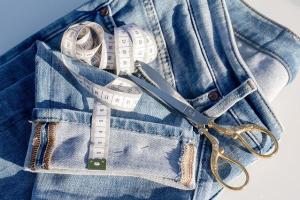Image by Myriams-Fotos from Pixabay
I’m starting to get back into sewing thanks to my voracious reading of back-posts of a happy stitch – and wondered about the different types of seams.
Here’s a little overview of the types of seams you can have in a garment: https://mysewingmall.blogspot.com/2015/12/an-overview-of-sewing-seam-types.html
Seeing these posts has reminded me that our clothing is made by real people, often by hand, or at least carefully designed in such a way that it matters to someone!
I’ve been taking a look at the seams inside my clothes – take a look right now at what you are wearing. Most commercially-made knit clothes (here’s how to tell, but if it’s stretchy at all it’s probably a knit, like tshirts often are) are sewn with serged seams, on a serger, with that telltale double-zig-zag seam on the inside. A dress shirt or jeans? Flat-felled seams, most likely.
It’s interesting to note the construction of various types of clothes that we own, and the care and construction put into them. It’s one of a whole series of steps of getting to you, from growing the cotton or other fiber (or growing the animal and removing the fibers, or making it in a factory from oil), to making the thread, to weaving or knitting the fabric, dyeing or printing, followed by design of the garment, sourcing the materials and thread, then sewing, adding finishes like buttons and zippers, and labels and care instructions, any additional printing and embroidery, until finally it’s a finished garment that makes its way to your home.
In that way, making your own clothes is a revolutionary act because you see a good chunk of this process yourself, and produce locally, and develop a skill that is lost to many of us in the modern world. But unlike building your own phone (though not impossible, see here), which isn’t really possible for most people, making clothes is accessible. And wearable!


Leave a comment